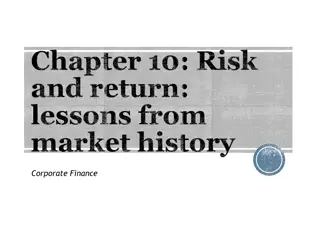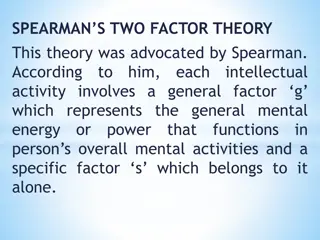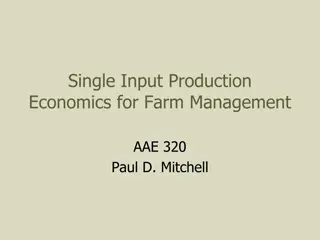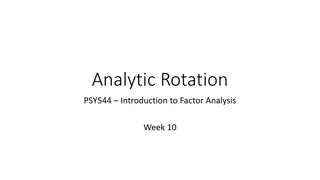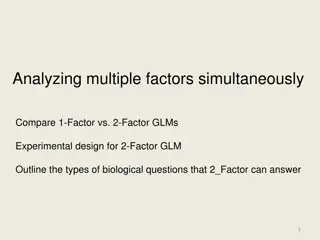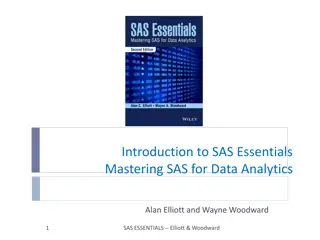Understanding the Concept of Return to Factor in Production Economics
Return to Factor is a key concept in production economics that explains the relationship between variable inputs like labor and total production output. The concept is based on the three stages of production - increasing returns, diminishing returns, and negative returns. By analyzing the behavior of total output when variable factors are changed, we can understand how production efficiency varies in the short run. The concept is also known as the Law of Variable Proportions or Diminishing Marginal Returns. Assumptions include fixed and variable factors of production, with labor being the variable factor and capital being the fixed factor. Graphical representations and references from economic textbooks further elucidate the concept.
- Production Economics
- Return to Factor
- Law of Variable Proportions
- Diminishing Marginal Returns
- Three Stages of Production
Download Presentation

Please find below an Image/Link to download the presentation.
The content on the website is provided AS IS for your information and personal use only. It may not be sold, licensed, or shared on other websites without obtaining consent from the author. Download presentation by click this link. If you encounter any issues during the download, it is possible that the publisher has removed the file from their server.
E N D
Presentation Transcript
Return to Factor Dr Babita Pathak Assistant professor Durga mahavidhyalay
Return to Factor Return to Factor The process of changing the quantity of production when all the factors are stable and only the variable inputs are changed is called Return to a Factor. Returns to a factor relates to the behaviour of total output as one variable input, say labour, is varied. It is a short-run concept. In modern time, it is called Law of Variable Proportions. It can also be said the Law of Diminishing Marginal Product, Diminishing Marginal Returns or Diminishing Returns.
Return to Factor Assumptions: There are only two factors of production, labour and capital. Labour is the variable factor and capital is the fixed factor. One factor of production is variable while others are fixed. All units of variable factors are equal or expertise. There is no change in production technique
Return to Factor Three Stages of Production: Three Stages of Production: Stage 1: Increasing Return to a Factor: The inputs of variable factors increase in the first stage, the marginal production increases. Thus, TP increases in increasing rate. Stage 2: Diminishing Return to a Factor: The marginal production decreases by inputs of variable factors. Thus, TP increases in decreasing rate. Stage 3:Negative Return to a Factor: The marginal production gets negative by inputs of variable factors. Thus the total production gets declined.
Return to Factor Fixed Factor (Land)(acres) Stages Variable Factor (Labour) Total Product (units) Marginal Product (units) 1 1 10 10 Stage I: Increasing Returns to a Factor 1 2 30 20 1 3 45 15 Stage II: Diminishing Returns to a Factor 1 4 52 7 1 5 52 0 Stage 1 6 48 -4 III: Negative Returns to a Factor
Return to Factor Diagrammatic Representation :
Return to Factor References Dwivedi D N, Managerial Economics, Vikas Publishing House Pvt. Ltd, 2006 Samuelson, Paul A; Nordhaus, William D. (2014). Economics. Boston, Mass: Irwin McGraw-Hill












